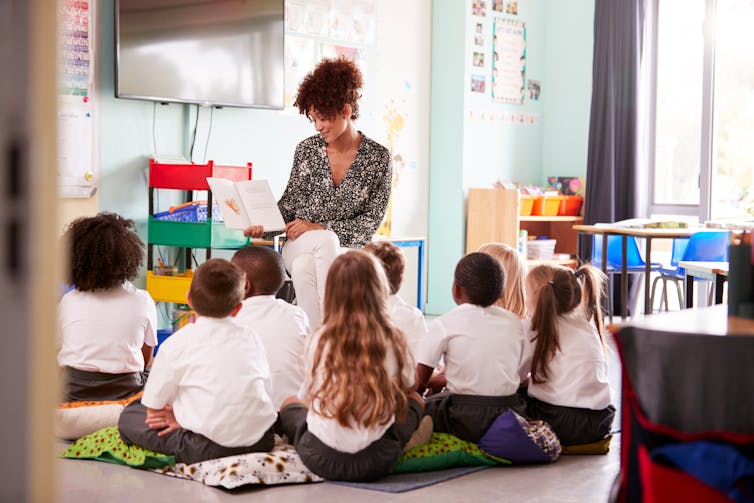To fix inequality in Australian education, governments should fully fund all non-government primary schools, according to former former NSW Education Minister and now head of the UNSW Gonski Institute, Adrian Piccoli.
In an opinion piece published in the Sydney Morning Herald, Piccoli suggests government funding be dependent on non-government schools no longer collecting fees from parents and agreeing to abide by the same enrolment and accountability rules as public schools.
The fully-funded non-government primary private schools would still be run by the same organisations as before, and abide by the same educational philosophy. But no student would be turned away.
Fully funding primary schools would enable parents to access neighbourhood non-government schools at no cost. It would provide welcome relief for parents who now send their children to non-government primary schools, but who are facing difficulties paying fees due to the COVID-19 recession.
We are co-authors on a report documenting the rising inequality in Australian education, with Adrian Piccoli and educational consultant Chris Bonnor. The report will be released by the Gonski Institute in coming days.
Read more: Explaining Australia's school funding debate: what's at stake
Our previous analysis of the MySchool website found many non-government schools cost the government almost as much money as government schools. Having them abide by the same rules as do public schools would go some way towards decreasing inequality in Australian education.
How it might work in Australia
Fully-funding all Australian primary schools is a relatively straightforward proposition. But attached to it must be a renegotiated set of mutual obligations between schools and those who fund them — that is, elected governments. This must have the explicit goal of improving equitable outcomes for all communities, not just those which are already advantaged.
The additional cost of full recurrent public funding of all non-government primary schools is estimated to be about A$500 million a year across Australia. Given Australian governments spend almost $60 billion a year on school education this equates to a relatively small investment.
Our earlier report has shown many non-government schools are nearly fully-funded to the levels established by the Gonski reviews and some fall short. Yet, remarkably, some remain in excess of their calculated entitlement — a quirk of a decision to not disadvantage over-funded schools.
By fully funding primary schools these disparities can be addressed and more equitable funding provided.
Removing fees will likely create additional demand for some schools. Parents who value a particular model (Montessori, Steiner, religious) but who do not have the resources to pay might increase enrolment interest.
Read more: Yes, some Australian private schools are overfunded – here's why
Funding would flow with the student. This means the schools would be resourced to cater for their enrolment. Exclusion would not be permitted, as is currently the case in fully-funded government schools.
More radically, non-government schools could partner more closely with other local government schools, perhaps even relocating students through local proximity.
Other countries do it already
While the suggestion to fully fund primary private schools might appear radical to many Australians, a variety of models already exist outside Australia.

The UK government funds state schools in which a foundation or trust (usually a religious organisation), contributes to building costs and has a substantial influence in the running of the school. In most cases the foundation or trust owns the buildings. These are called voluntary-aided schools.
New Zealand has state-integrated schools. These allow for collaboration between the government and a private proprietor in a way that preserves the special character of the proprietor and the school — such as having Montessori and Steiner approaches.
Read more: The UK Labour Party wants to abolish private schools – could we do that in Australia?
In Canada, provision of faith-based schooling derives from the founding Constitution. Ontario, Alberta and Saskatchewan, for instance, provide students with fully funded Catholic schools.
We aren’t necessarily advocating for any of these particular models in Australia. On the contrary, we are calling for a redesign that will reflect our contextual governance, history and culture, and that must also include better outcomes for our First Nations Peoples.
Given the financial difficulties now facing many families, and schools, now is the time to act. Redressing the growing and accelerating segregation and inequity in Australian schools is critical to the future of Australia’s youth and our economy.

